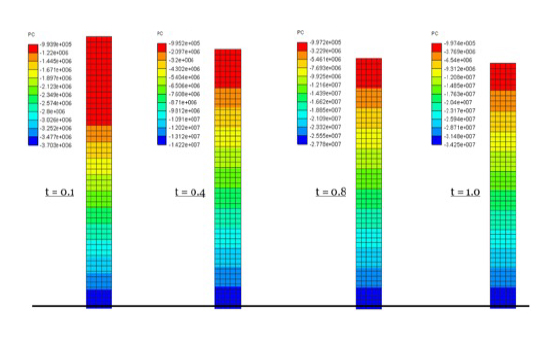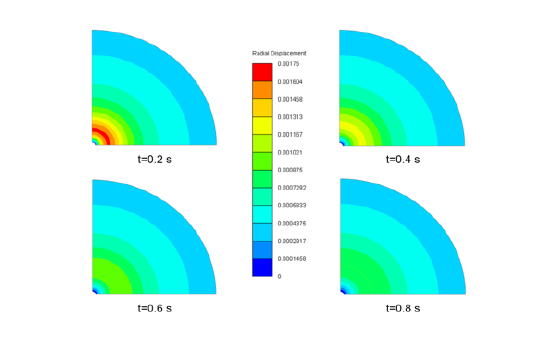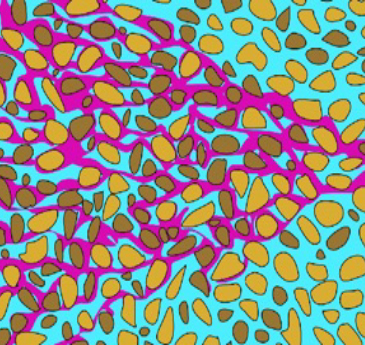Project Overview
Explicit and Implicit Finite Element Techniques Applied to Mechanical and Coupled Geomechanical Problems
October 2018-March 2022
In this work we determine the classes of problems within computational geomechanics where the staggered or fully implicit monolithic coupling schemes are most effective. These techniques can be applied in industries such as civil engineering and the energy-based sector, in particular the oil and gas industry.
Project Aims
The aims of this work included:
- the development and comparison of critical state material models in both explicit and implicit forms,
- a review and collation of analytical solutions for coupled porous media problems with particular emphasis on geomechanical solutions,
- solution of porous media problems with both stabilised staggered coupled and fully implicit, monolithic Finite Element schemes. The analytical solutions formed the cornerstone of validating both staggered and fully implicit coupled Finite Element schemes.
Solving coupled problems in engineering mechanics is ubiquitous in diverse areas such as geomechanics, biomechanics and fluid-structure interaction. The end purpose was to be able to recommend the best coupled solution scheme for different classes of geomechanical problems.
This work firstly assessed the explicit and implicit treatments of the Cam Clay material model, which is most effective when applied to soils. However, when the soil becomes more competent, either due to pressure, temperature, or chemical affects, then the Cam Clay material model is limited, and it is unable to capture the shear failure yield surface. To this end, we extended the ideas in the Cam Clay material model and extended these to the SR3 material model.
The main drive in these investigations was the comparison of explicit and implicit treatments, and the response when considering like-to-like geotechnical problems. Hence assessments were carried out over a range of different stress states. Validation examples included:
- triaxial cell loading,
- column compaction,
- strip footing loaded to failure.
The Coussy well-bore problem is a particularly interesting problem from a practical point of view with its natural application to the energy-based sector companies. From usage of both analytical and numerical methods it was possible to determine material properties of the rock body, e.g., elastic modulus or permeability, from assessing the experimental well-bore surface fluid pressure evolution due to an injection of instantaneous fluid mass.




